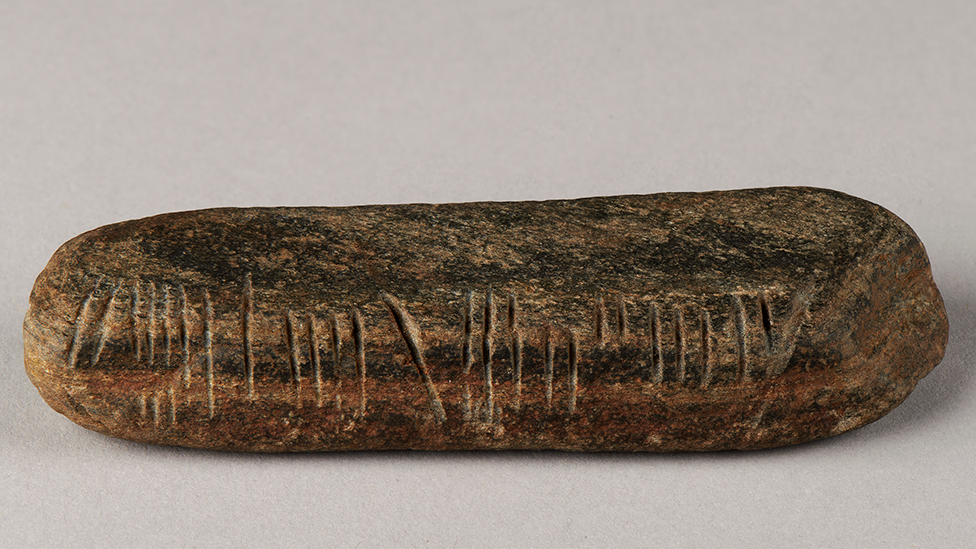Stone with ancient writing system unearthed in garden

The stone's Ogham script is believed to have been carved sometime between the 4th and 6th Century
- Published
The discovery of small stone carved with an early form of Celtic script has caused excitement among archaeologists after being dug up in a garden.
It was found by geography teacher Graham Senior in Coventry during lockdown in 2020 while he was weeding, but its true value was only recently understood.
Dating back possibly as far as the 4th Century, the stone's Ogham script features a series of lines inscribed on three of its sides, and experts are trying to understand their full meaning.
Teresa Gilmore, finds liaison officer for Staffordshire and West Midlands said: "It's an amazing find, we're very lucky."
She added: "Most Ogham inscriptions you generally find in the more Celtic areas - Scotland, Ireland and down in Cornwall - you don't generally get them down in the Midlands."
Mr Senior told the BBC he had a "fair idea" what the stone was when he found it, but was unable to find someone to confirm his suspicions and "hit a brick wall".
But he said that changed when Katherine Forsyth from the University of Glasgow "took the trouble to come down with a researcher" a few months ago.
She partially translated the script to reveal a name: Mael Dumcail.
Graham Senior, here pictured (right) with Herbert curator Ali Wells, found the stone while weeding in 2020
Mr Senior said his theory was that it could have been a keepsake, possibly carried by a Roman soldier.
"It’s a very tactile thing - just feels right as if it was meant to be held," he said.
The piece of sandstone measures just 11cm (4 inches) in length and is believed to have been carved sometime between the 4th and 6th Century AD.
Ms Gilmore said another theory was that it could have been used by Irish tradesmen to make contact with each other.
The team said Ogham was highly unusual among world writing systems, consisting solely of parallel lines in groups of one to five.
They said it could provide an insight into the Irish language before the use of the Latin insular script
Part of the writing was deciphered and revealed a name: Mael Dumcail
She said the discovery took her by surprise, but finds like this can "leave more questions than answers".
She hopes to learn more when the rest of the stone is translated.
It is due to go on display at the Herbert Art Gallery and Museum in Coventry on Saturday, as part of a free exhibition titled Collecting Coventry.
Follow BBC West Midlands on Facebook, external, X, external and Instagram, external. Send your story ideas to: newsonline.westmidlands@bbc.co.uk, external
Related topics
- Published2 July 2023
Related internet links
- Published8 May